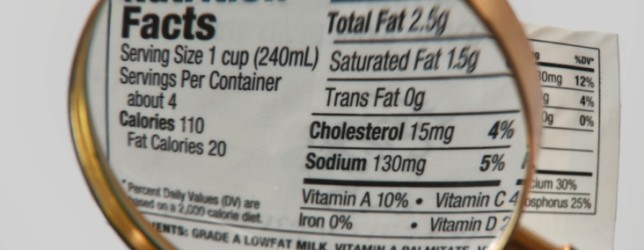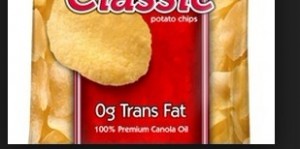Apr 7th, 2013 by denisetian
http://sethgodin.typepad.com/seths_blog/2013/03/swagger.html
Is it a must for a marketer to be a swagger? Instead of “swagger”, I prefer to put it as “considerate”. As a marketer, you need to stand at the consumers’ side and think for their needs

Being considerate is more effective than swaging because you will always find someone who is more swagger than you. The competition is very high being a swagger, and the potential consequences of lacking justification or substance can be fetal, usually lose trust from a customer which is an irreversible lost. However, being considerate about the customers is different. Baring in mind the customer’s needs, marketing the products in the aspect of fulfilling their needs is the key to successful marketing. The powers of helping customers know what benefit they can gain from the product adds value to the product. The product might not require so much money to make, but selling at a relatively high price represents the marketing power that helps customers recognize the value of the product and maximize the use of it.
Image courtesy of:
http://topspinthefuzzy.deviantart.com/art/Jeph-Has-Swagger-277807269
Posted in Uncategorized | No Comments »
Apr 1st, 2013 by denisetian


It is a great experience to work for a company’s marketing plan in a team. Our team chose Kraft Foods Inc. as our potential company. We discussed, analyzed and reported our plan during group meetings, thus let me know more about how it functions as a team and how to be a good team player. One of the assignments I like most is making the final video about our marketing plan. I am the person who takes charge of the video editing, and I learned a lot by doing this even though it takes a lot longer than preparing for a live presentation alone. Making video also gives us a chance to be creative on how we present and be very careful on what we say as well. The video is a final product that we can keep which represents our precious time and memories working as a team.

The class is very entertaining and engaging as well. Rather than the technical words, I learnt a lot of real world examples and practices which I can apply to future marketing directly without so much difficulty. I feel the class of introducing to marketing well worth its time and effort, and it brought me interest in learning in a more and deeper level.
Images courtesy of:
http://www.dreamstime.com/royalty-free-stock-photography-steps-to-success-image14061557
http://www.creativeguerrillamarketing.com/viral-marketing/uptime-affects-your-marketing/attachment/marketing-3/
http://bookboon.com/blog/tag/marketing/
Posted in Uncategorized | No Comments »
Mar 8th, 2013 by denisetian



This post drew my attention for the interesting idea that not all of us are supper models, so it’s not an effective choice to market with hot looking images because they are not alike. The reality is that those pictures do draw attentions to people especially teenagers where they think these pictures are funny and cool.
However, I agree that using hot photos for advertising or promoting is often not a good choice. Most of people think these pictures are entertaining but superficial, therefore, even though they feel it is okay to have a glance of fun, but they do not want to associate themselves with those photos. Companies need to be cautious about using hot looking pictures in promotion, because they might lose their loyal customers due to their promoting brand image disassociating with their customers’ lifestyle.
Images courtesy of:
https://blogs.ubc.ca/reefchiu1/2013/01/20/whoa-look-at-the-pretty-ladies/
Posted in Uncategorized | No Comments »
Feb 21st, 2013 by denisetian

Look at the packaging labels around us: whole grain, 0 trans-fat, low sugar, real fruit, etc. Companies play hard to label their product to look healthy and nutritious. Is it really the case as stated on the label?
#1 Misleading Serving Size
Companies sometimes manipulate the serving size to make their product look healthier. Look at this nutritional label on a muffin: 600 calories and 18g of fat per serving: with 3 servings per muffin. Guess how many people will pick up a muffin and only eat one third of it? It is actually 1800 calories per muffin, but companies usually do not write like that because it does not look healthy.
#2 Inaccurate Nutrition Label
As you pick up a frozen dinner with 500 calories label, you are happy that you get low calorie fast meal. Be cautious! The meal may contain 600 calories! You need to consider that Food and Drug Administration (FDA) allows calorie counts on the standard “Nutrition Facts” labels to be off by as much as 20% before they even think about getting involved. Now you see how companies play around with this rule to make their label look better. A 2011 report1 showed that 24% of nutritional labels were grossly inaccurate: that’s 1 out of every 4 products on the shelf! So it is better to be skeptical being a consumer facing the massive labeling marketing.
#3 0 Trans-Fat
If you go shopping see the 0 trans-fat chips on the shelf, and your eyes shined and excited to buy one bag without worrying about getting any fat! You probably fall into the marketing trap again. A little known fact about nutritional guidelines in the US is that any amount of fat or sugar under 0.5g per serving can be listed as 0g. So say a bag of chips 450g, which is 16 servings. By easy calculation, the bag might legally contain as much as 8g of trans-fat without being labeled. Trans-fat should be eaten in small concentrations with recommendation of trans-fat to 2 g per day or less. That means a bag of 0 trans-fat chips could potentially consume 4 times the daily limits.
With all the above being said, it is very important to be skeptical, informed and cautious on picking packaged food. Eating healthy is not as simply as following what the label says. It could lead to the opposite direction of being healthy.
Cited from:
http://www.livestrong.com/article/370685-how-many-fat-grams-per-day/
http://www.builtlean.com/2013/02/13/food-industry-marketing-facts/
Posted in Uncategorized | No Comments »
Feb 10th, 2013 by denisetian
Wondering how to market your small business without spending a fortune? It is critically important to market your business every penny in the small business counts for its success.
1. Make YouTube Video
YouTube can be a powerful platform for marketing online, since there are more than 800 million visitors a month. By just posting videos about your product or sharing your thoughts, you can get so much potential reviews on your product. The cost of it could only be your digital camera and you effort editing on free movie editor application such as iMovie. Or you can pay as little as $5 to get a professional editor such as Fiver.com.

2. Create a LinkedIn Group
LinkedIn group is free to create, and it can provide you with a professional network environment. It helps with your business marketing by providing resources and start discussion on topics that benefits you.
3. Endorse Local Celebrity
It is dream of many business owners to have their product endorsed by a famous celebrity; however, it is enormously expensive, such as millions of dollars for one-year endorsement. Local celebrity, on the other hand, has the same social influence within the local community, but absolutely lower cost. You can even negotiate with paying by the company’s products
4. Write an e-book
Writing a book relating to the biggest issues in your industry, and you can mention your company and product in the book. This will encourage readers to learn more about the company and its product. And publishing is no longer a trouble. Amazon, for example, can let you upload a digital book for free, with a 33% take on every sale.

It is still possible to market your product without spending a lot of money, as long as you have those ideas and take actions.
Cite: http://www.entrepreneur.com/article/226146
Posted in Uncategorized | No Comments »
Jan 20th, 2013 by denisetian
What makes being ethical worth it in business?

As a trend today, companies are expected to take their social responsibilities throughout the operation. Companies spent billions of dollars from eco-friendly production line to working environment reinforcement, hoping to boost brand image among the public. How is being ethical a win-win for both firms and individuals?
Researches were done showing that customers are willing to pay a premium on ethical products, but will pay a large discount on unethical goods. Furthermore, the attitude to paying for ethical products is much stronger than getting unethical goods in a low price. These show potential gains of the companies with positive brand ethically in an operational field.
Apart from that, employer’s deeper needs of acting virtually are fulfilled, employees will be tied more to the companies through ethical cultural values, and consumers are satisfied by encouraging the necessity of doing the right things. Most importantly, these positive externalities plus the opportunity cost of being criticized as immoral would far off-set the cost of implementing businesses ethically.
Getting out from jungle of guilty and being ethical? Totally worth it!
Sources:
Does Being Ethical Pay? http://online.wsj.com/article/SB121018735490274425.html
Posted in Uncategorized | No Comments »







